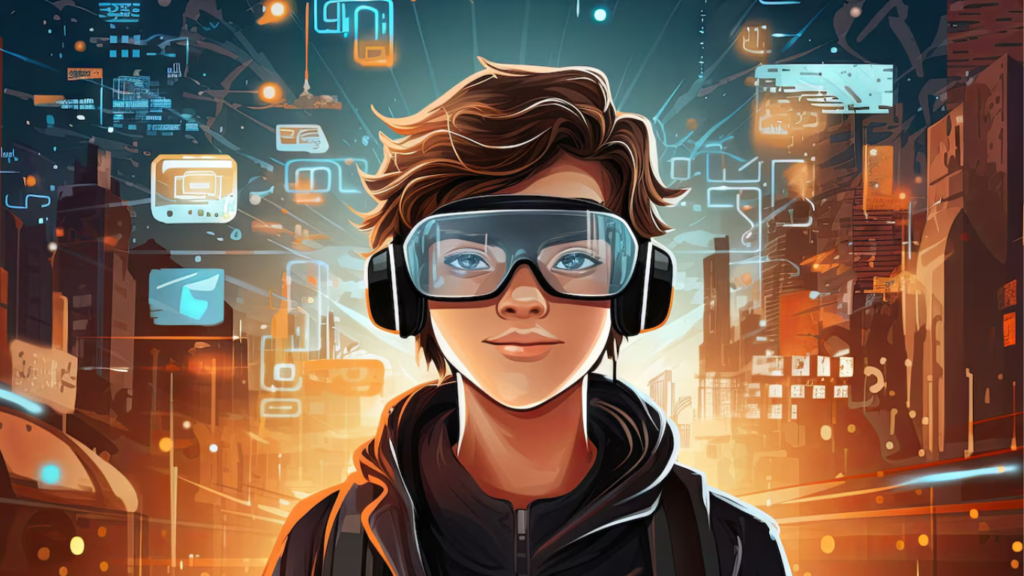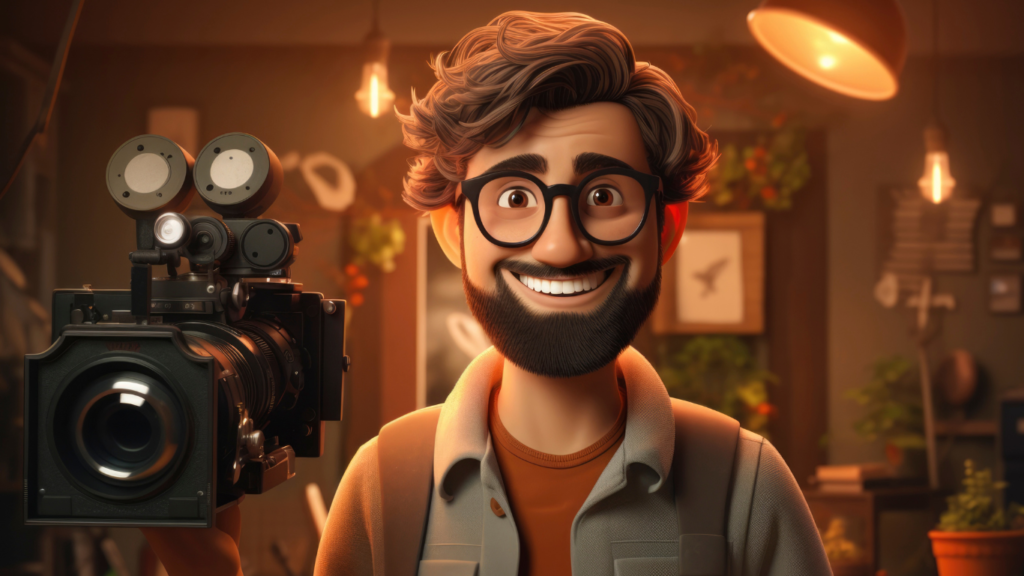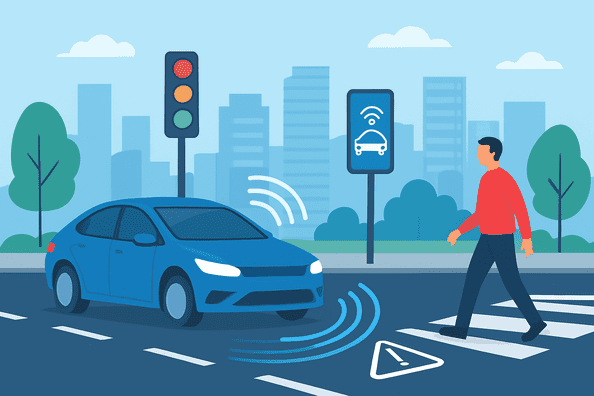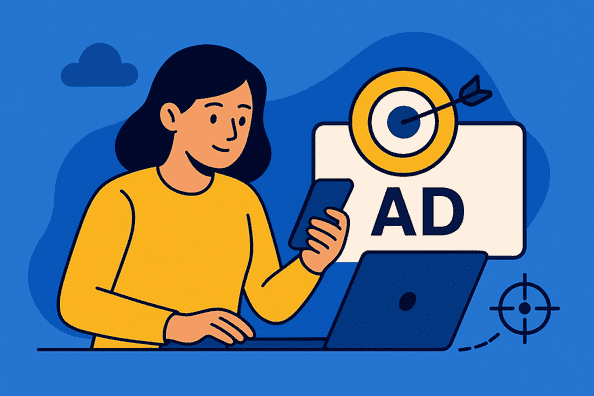Meta’s recent unveiling of MoCha represents a watershed moment in AI-driven character animation, moving beyond static talking heads to deliver fully realized, cinematic-quality character performances. This groundbreaking technology allows creators to generate full-body animated characters using nothing more than text and speech input, potentially revolutionizing filmmaking, gaming, and virtual content creation. MoCha’s innovations in speech synchronization, character interaction, and animation fluidity set a new standard for what AI can accomplish in the realm of digital storytelling, opening doors for creators across industries.
Understanding Meta’s MoCha AI Revolution
Meta’s MoCha stands as the first AI model specifically designed to generate movie-grade talking character animations with unprecedented realism and expressiveness. Unveiled in early April 2025, this groundbreaking technology represents a significant leap forward in AI-generated content creation. Unlike previous models that could only produce basic talking head animations with limited expressions, MoCha generates complete character performances—from subtle facial expressions to coordinated full-body movements that synchronize perfectly with speech.
The technology addresses a critical gap in AI-generated content: the ability to create character-driven storytelling that feels natural and cinematic. While recent advancements in video generation have achieved impressive motion realism, they often overlooked the nuanced requirements of character animation that storytelling demands. MoCha changes this paradigm by focusing specifically on character performance, enabling creators to bring their visions to life without the extensive resources traditionally required for high-quality animation.
What makes MoCha particularly revolutionary is its accessibility. With just text and speech inputs, creators can generate sophisticated character animations that would previously have required teams of animators, voice actors, and motion capture specialists. This democratization of animation technology opens new creative possibilities for independent filmmakers, game developers, educators, and content creators across disciplines who previously lacked access to professional-grade animation resources.
Groundbreaking Features of Meta MoCha AI-Generated Full-Body Character Animations

Full-Body Character Animation Beyond Talking Heads
The most immediately apparent advancement MoCha brings to the table is its ability to generate complete character performances that extend well beyond facial movements. For years, AI-generated characters were limited to talking-head models that could only produce basic facial animations with rudimentary lip-syncing. These earlier models created characters that appeared flat and lifeless, lacking the natural body language that humans unconsciously rely on for communication context.
MoCha transforms this limitation by generating characters capable of natural gestures, fluid body movements, and contextually appropriate physical expressions. Characters can walk through environments, use hand gestures to emphasize points, and physically interact with their surroundings in ways that feel natural rather than robotic. This full-body animation capability creates a significant leap in believability, allowing AI-generated characters to cross the uncanny valley that previously separated them from traditionally animated characters.
The technology understands the subtle connections between speech patterns, emotional content, and appropriate physical responses. When a character expresses excitement, for instance, MoCha might incorporate more energetic gestures and animated body language. For contemplative moments, it can generate more subdued, thoughtful physical expressions that match the tone of the dialogue.
Speech-Video Window Attention: Perfect Lip-Sync and Natural Expression
One of MoCha’s core technological innovations is its Speech-Video Window Attention mechanism, which ensures flawless lip synchronization and natural audio-visual alignment. This advanced system creates a direct relationship between specific phonemes in the speech input and corresponding facial movements, solving one of the most challenging aspects of character animation.
The mechanism works by creating a specialized attention window that maintains temporal coherence between speech audio and visual elements. This allows MoCha to precisely align mouth movements with speech sounds while simultaneously generating appropriate facial expressions that match the emotional context of the dialogue. Whether a character is delivering an impassioned speech, whispering a secret, or shouting in surprise, the lip movements and facial expressions maintain perfect synchronization with the audio.
This technology represents a significant advancement over previous approaches that often created obvious misalignments between audio and visual elements. The result is character performances that maintain the illusion of life—a critical factor for audience engagement and storytelling immersion that previous AI animation systems struggled to achieve.
Multi-Character Conversations with Contextual Coherence
Perhaps one of MoCha’s most impressive capabilities is its ability to generate interactions between multiple characters, creating dynamic conversations with contextual coherence. This moves AI-generated content beyond isolated character monologues into the realm of true scene creation with interactive dialogue.
MoCha accomplishes this through structured prompt templates with character tags that enable turn-based dialogue systems. These systems allow AI-generated characters to engage in context-aware conversations that maintain narrative coherence across multiple exchanges. Characters can respond to each other, maintain consistent personalities throughout a scene, and even display appropriate reaction shots when they’re listening rather than speaking.
This multi-character capability opens entirely new possibilities for storytelling, allowing creators to generate complete dramatic scenes rather than just individual character performances. The system maintains awareness of spatial relationships between characters and ensures that their interactions feel natural rather than mechanical or disconnected.
Joint Training Strategy for Enhanced Versatility
To overcome the limitations of available training data, Meta developed an innovative joint training strategy for MoCha that combines both speech-labeled and text-labeled video data. This approach significantly improves the model’s ability to generalize across diverse character actions, environments, and storytelling contexts.
The scarcity of large-scale, high-quality datasets containing synchronized speech and video has been a major obstacle for AI animation systems. Meta’s solution leverages two types of data: videos with speech labels that help train the audio-visual synchronization aspects, and text-labeled video data that enhances the model’s understanding of actions, environments, and broader contextual elements.
This combined approach allows MoCha to understand both the micro-level details of speech synchronization and the macro-level requirements of character performance and scene composition. The result is a system with remarkable versatility that can adapt to diverse narrative requirements, character types, and visual styles while maintaining consistently high animation quality.
Real-World Applications of Creating Talking Characters with Meta’s MoCha AI
Transforming the Filmmaking and Animation Process
MoCha stands poised to fundamentally alter how films and animations are conceived, prototyped, and produced. Traditionally, visualizing animated sequences required extensive storyboarding, animatics, and preliminary animation—all resource-intensive processes that limited iteration and experimentation. With MoCha, filmmakers can rapidly prototype complete scenes using nothing more than script text and voice recordings.
This capability allows directors and animators to quickly test different approaches to a scene, experimenting with timing, character positioning, and emotional delivery without committing significant resources. Once satisfied with the MoCha-generated preview, production teams can use it as a precise reference for final animation or, for certain applications, potentially use the AI output directly with minimal refinement.
Independent filmmakers stand to benefit enormously from this technology. Without access to large animation teams or motion capture facilities, independent creators can now produce sophisticated animated content that approaches professional quality. This democratization of animation tools could lead to an explosion of creative storytelling from previously underrepresented voices in the animation field.
Revolutionizing Game Development and Interactive Media
The gaming industry faces constant pressure to create more realistic, responsive characters while managing production costs and timelines. MoCha offers game developers a powerful new tool for character creation and animation that could significantly streamline development workflows.
Non-player characters (NPCs) could become dramatically more lifelike and responsive using MoCha’s capabilities. Rather than cycling through limited pre-animated responses, NPCs could generate appropriate reactions in real-time based on player interactions. This would create more immersive gaming experiences where characters feel truly responsive rather than programmatic.
Game prototyping also stands to benefit enormously. Developers could rapidly visualize story sequences, character interactions, and cutscenes during early development stages, allowing for more effective iteration before committing to final animation production. This could reduce development costs while simultaneously improving narrative quality in games.
Educational Content and Virtual Learning Environments
Educational content creators often struggle to produce engaging instructional materials with limited resources. MoCha enables the creation of dynamic educational content featuring animated instructors and character-driven explanations of complex concepts.
Virtual tutors could be created that respond to student questions with appropriate explanations and demonstrations. Language learning applications could generate characters demonstrating proper pronunciation with accurate lip movements. Historical education could feature animated recreations of historical figures delivering their actual speeches with appropriate period-specific gestures and mannerisms.
The technology could also support the creation of more inclusive educational content, with the ability to generate diverse character representations that help all students see themselves reflected in learning materials. This representation can be crucial for engagement and learning outcomes, particularly for underrepresented groups.
Marketing, Advertising, and Brand Experiences
For marketing professionals, MoCha offers unprecedented opportunities to create personalized, character-driven content at scale. Brands could develop consistent character ambassadors that maintain perfect continuity across multiple campaigns and content pieces.
Product demonstrations could feature animated characters showing product features in context, with the ability to quickly update these demonstrations as products evolve. Virtual spokespersons could deliver consistent messaging across multiple languages and cultural contexts, maintaining appropriate cultural nuances in gestures and expressions.
Customer service experiences could be enhanced with animated characters providing assistance, creating more engaging interactions than text-based chatbots while maintaining the efficiency of automated systems. These applications could significantly improve customer engagement while streamlining content production for marketing teams.
Integrating MoCha with Emerging Technology Ecosystems

Vibe Coding: Natural Language Animation Direction
The emergence of vibe coding—where AI handles technical implementation while creators focus on creative direction—creates a perfect synergy with MoCha’s capabilities. Vibe coding allows creators to express their vision in natural language, with AI systems handling the technical execution. When combined with MoCha, this enables a revolutionary animation workflow where directors can describe scenes conversationally and see them rendered immediately.
This approach removes technical barriers that traditionally separated creative vision from execution. A director might simply describe how a character should move—”walk hesitantly, then pause with surprise when seeing the other character”—and MoCha could generate that performance instantly. This creates an intuitive, conversational approach to animation direction that feels more like working with human actors than traditional animation processes.
The combination of vibe coding principles with MoCha’s animation capabilities creates a more intuitive creative process that emphasizes artistic vision over technical implementation. This could fundamentally change who can create animated content and how they approach the creative process.
Hyperautomation Tools for Animation Workflows
As enterprises increasingly adopt hyperautomation strategies to streamline complex workflows, MoCha offers significant potential for automating aspects of animation and content production that previously required extensive manual work. When integrated into broader hyperautomation systems, MoCha could automatically generate animated content based on structured inputs from other business processes.
For instance, a marketing automation system could use customer data to trigger the creation of personalized animated messaging featuring characters speaking directly to individual customer needs. Training systems could automatically generate instructional animations based on procedural documentation. Report data could be transformed into animated presentations with characters explaining key insights.
These hyperautomated workflows could dramatically reduce the resources required for animation production while significantly increasing output volume and personalization capabilities. Organizations could maintain consistent character representation across all content while adapting messaging for specific audiences and purposes.
AI Meeting Assistants Enhanced with Character Animation
As remote and hybrid work environments continue to evolve, MoCha could transform virtual collaboration through enhanced AI meeting assistants. Current meeting assistants primarily focus on transcription, scheduling, and basic interaction. With MoCha integration, these assistants could appear as animated characters that provide more engaging, human-like interactions.
Meeting summaries could be delivered by animated characters highlighting key points. Virtual facilitators could guide discussions with appropriate gestures and expressions that help maintain engagement. International meetings could feature animated translators that maintain appropriate lip-sync in multiple languages, making communication feel more natural across language barriers.
These enhanced meeting experiences would combine the efficiency of AI assistance with the engagement benefits of visual character interaction. This could help address the well-documented engagement challenges of virtual meetings by creating more visually dynamic and humanized remote collaboration experiences.
The Future of the MoCha AI Model for Movie-Grade Character Synthesis

Ethical Considerations and Responsible Implementation
As with any powerful AI technology, MoCha raises important ethical questions that must be addressed for responsible implementation. The ability to create realistic character performances from simple text and speech inputs creates potential for misuse through deepfakes, unauthorized digital replicas of real people, or deceptive content.
Meta will need to develop robust safeguards against these issues, potentially including watermarking, authentication systems, and usage policies that prevent harmful applications. Creator communities and policymakers must also engage with these questions to establish appropriate norms and regulations around AI-generated character content.
Transparency about the AI origin of MoCha-generated content will be essential, particularly as the technology becomes more photorealistic. Clear disclosure practices and potentially mandatory identification of AI-generated content may become necessary as the technology evolves.
Technical Evolution and Future Capabilities
The current MoCha implementation represents just the beginning of what this technology might achieve. Future iterations will likely deliver increased realism, more nuanced emotional expression, and greater adaptability across visual styles and character types.
Integration with other AI systems could enable MoCha to generate characters that respond to real-time environmental inputs, creating truly interactive experiences. Advances in physical simulation could allow for more sophisticated character-environment interactions, with animated characters that convincingly manipulate objects and navigate complex spaces.
As training data expands and architectural improvements continue, we can expect significant advancements in MoCha’s ability to generate stylistically diverse animations—from hyperrealistic human characters to stylized cartoon figures—while maintaining the same level of performance quality and expressiveness across all styles.
Industry Adoption and Economic Impact
The adoption of MoCha and similar technologies will likely reshape the economics of animation and content production across multiple industries. Traditional animation workflows may evolve to incorporate AI-generated content as a foundation that human animators refine and enhance rather than creating entirely from scratch.
This evolution could democratize access to high-quality animation, allowing smaller studios and independent creators to compete more effectively with larger production companies. It may also shift job functions within the animation industry, potentially reducing demand for certain technical roles while increasing opportunities for creative directors who can effectively prompt and guide AI systems.
Industries beyond entertainment—including education, marketing, and corporate communications—may increasingly incorporate animated character content as production costs decrease and quality improves. This could lead to new business models and content formats that were previously economically unfeasible.
Advantages of Using Meta’s MoCha for Animation Projects
Dramatic Reduction in Production Time and Resources
Perhaps the most immediate advantage of MoCha for animation projects is the dramatic reduction in production time and resources required. Traditional animation typically requires extensive storyboarding, character design, rigging, key framing, and refinement—each step involving specialized skills and significant time investment.
MoCha compresses this process dramatically, potentially reducing production timelines from months to days for certain types of content. This efficiency enables more rapid iteration, allowing creators to test different approaches quickly before committing to final production. For time-sensitive content like news commentary, event responses, or trending topics, this speed advantage could be transformative.
The technology also reduces the specialized technical knowledge required for animation production. While traditional animation demands expertise in complex software tools and animation principles, MoCha makes basic animation production accessible to creators with no technical animation background. This opens animation as a medium to a much broader range of storytellers.
Unprecedented Creative Flexibility
MoCha offers creators a level of flexibility that traditional animation processes cannot match. The ability to rapidly regenerate scenes with modified parameters allows for experimentation that would be prohibitively expensive in conventional animation workflows.
Directors can test different emotional deliveries, pacing options, or character movements without the significant resource commitment traditionally required for each variation. This encourages creative exploration and potentially leads to more refined final products through extensive iteration.
The technology also enables dynamic content adaptation for different contexts. The same basic scene could be quickly modified for different audiences, languages, or cultural contexts, maintaining consistent quality across all variations. This adaptability makes MoCha particularly valuable for global content that requires localization beyond simple translation.
Accessibility and Democratization of Animation
By dramatically lowering both technical and financial barriers to animation production, MoCha democratizes access to high-quality character animation. Independent creators, educational institutions, small businesses, and content producers in developing regions can now create professional-quality animated content without massive resource investments.
This democratization could lead to greater diversity in animated storytelling, with voices and perspectives that have been historically underrepresented in animation gaining new opportunities for expression. Cultural stories that might not have had commercial viability in traditional animation economics could find audiences through more accessible production methods.
Educational institutions with limited resources can create engaging animated learning materials that would previously have been beyond their means. Small businesses can develop character-driven marketing content that competes visually with offerings from much larger competitors. This leveling effect could fundamentally alter who creates animation and what stories get told.
Integration with Existing Workflows and Tools
MoCha’s text and speech inputs make it remarkably adaptable to existing creative workflows. Screenwriters can see their dialogue transformed directly into animated sequences. Voice recordings from actors can drive character performances without requiring motion capture or extensive animation direction.
The technology can integrate with existing production pipelines, potentially serving as a previsualization tool for traditional animation or as a starting point that animators refine rather than beginning from scratch. This flexibility allows studios to incorporate MoCha in ways that complement their existing processes rather than requiring complete workflow reinvention.
For multimedia productions, MoCha enables more consistent character representation across different media formats. Characters can maintain consistent personality and performance qualities whether appearing in animated videos, interactive applications, or static imagery, creating more cohesive transmedia experiences.
Conclusion: The Transformative Potential of Meta MoCha Text-to-Video Character Generation
Meta’s MoCha represents a fundamental shift in how we approach character animation and digital storytelling. By enabling the creation of full-body, cinematically believable character performances from simple text and speech inputs, MoCha removes longstanding barriers between creative vision and technical execution. This technology doesn’t just improve existing animation processes—it reimagines them entirely.
The implications extend far beyond the entertainment industry. Educational content becomes more engaging and accessible. Marketing messages gain personality and emotional connection. Virtual collaboration becomes more human and intuitive. These applications collectively point toward a future where animated characters become a standard, accessible medium for communication across contexts.
As with any transformative technology, MoCha will likely disrupt existing workflows and business models while creating entirely new opportunities. The most successful creators and organizations will be those who recognize not just how MoCha can make current processes more efficient, but how it enables entirely new approaches to content creation and audience engagement.
What’s particularly exciting about MoCha is that we’re witnessing just the beginning of this technology. As the system evolves and integrates with other emerging technologies, we can expect increasingly sophisticated character performances, new creative possibilities, and applications we have yet to imagine. The foundation has been laid for a new era of AI-assisted storytelling that combines human creativity with computational capabilities in unprecedented ways.
What Role Will You Play in the Character Animation Revolution?
How do you envision using AI-generated talking characters in your projects? Are you excited about the creative possibilities, concerned about potential disruptions to traditional animation, or perhaps a mixture of both? The emergence of MoCha represents a pivotal moment in digital creativity that warrants thoughtful consideration from creators, consumers, and policy makers alike.
Whether you’re a filmmaker, educator, game developer, marketing professional, or simply someone interested in the future of digital storytelling, now is the time to engage with these new capabilities. Experiment with the technology, consider its implications for your field, and join the conversation about how we collectively shape the future of AI-assisted character animation.
Share your thoughts in the comments below about how you might use MoCha in your own work, or what questions and considerations you believe we should be addressing as this technology continues to evolve.



